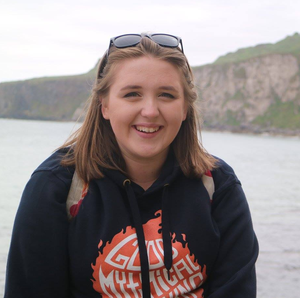Coastal Processes and their Impacts
Beschreibung

|
Erstellt von Antonia Blankenberg
vor mehr als 7 Jahre
|
|
Zusammenfassung der Ressource
Seite 1
Concordant and discordant coastlines
Geological structures at the coast play a large role in the type of landforms present. Concordant coastlines have rocks that lie parallel to the coastline. They typically have alternative bands of hard and soft rock running parallel to the coastline, with the hard rock acting as a barrier to erosion. When the hard rock is eroded, the soft rock is then quickly eroded, posing danger to local infrastructure. This is the case with Lulworth Cove, Dorset. Discordant coastlines have bands of rocks that lie perpendicular to the coast. Alternating layers of hard and soft rock that run perpendicular to the coastline typically form headlands and bays.
Seite 2
Transportation
There are four types of transportation in the sea, as shown on the above diagram. Traction is the rolling of larger rocks along the sea floor. Saltation is the hopping/bouncing of smaller rocks and pebbles across the sea floor. Very small pieces of sediment are carried through suspension. Solution carries dissolved minerals in the sea water.
Seite 3
Longshore Drift
Longshore drift is the process by which sediment is moved along the coastline. The angle and direction of this movement is determined by the direction of local prevailing winds. Prevailing winds control the swash of a wave. The backwash will always take the quickest route back to the sea and will move perpendicular to the coastline. The strength of the swash and backwash in this process will determine the type of wave, and the type of landform present.
Seite 4
Types of waves
Destructive waves: Stronger backwash and weaker swash Break frequently - 10-15 per minute Are high in proportion to their length Generally found on steep beaches Agent in coastal erosion
Constructive waves: Stronger swash and weaker backwash Break infrequently - fewer than 10 per minute Are long in proportion to their height Generally found on gently sloping beaches Agent in coastal deposition
Seite 5
Coastal Erosion:
There are four types of erosion that take place at coastal regions:Abrasion - the force of sand and pebbles being thrown by the sea scraping away at rockAttrition - the wearing away of rocks in the sea by hitting off one anotherHydraulic action - the wearing away of rocks by the force of the water, this can also occur through the compression of air in small gaps by waterSolution - the chemical breakdown of rock by seawaterRocks can also be broken down by physical and chemical weathering processes
Seite 6
How the UK climate affects erosion:
Seasonality Affects the rate of erosion In Winter, diurnal temperature fluctuations bring freeze-thaw weathering Storms The UK is susceptible to regular storms Storm waves have higher energies and are powerful agents of erosion This means constant repair of sea defenses is necessary Prevailing winds The prevailing wind for the UK is from the southwest Areas such as Cornwall and Devon in particular are subject to winds that have traveled far across the Atlantic ocean This leads to waves having a longer fetch, and thus, more power to erode the landscape
Möchten Sie kostenlos Ihre eigenen Notizen mit GoConqr erstellen? Mehr erfahren.
